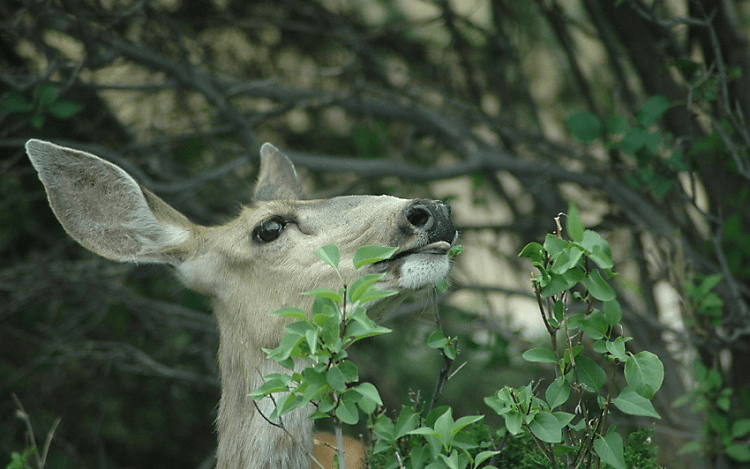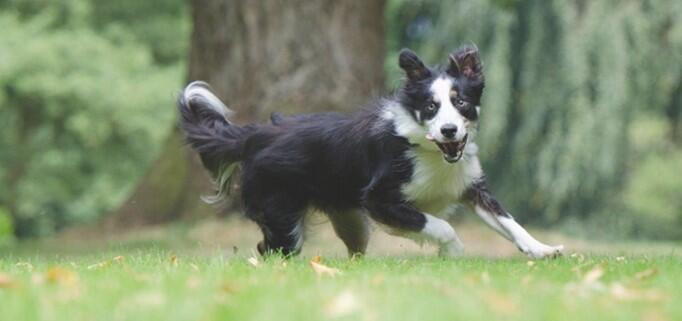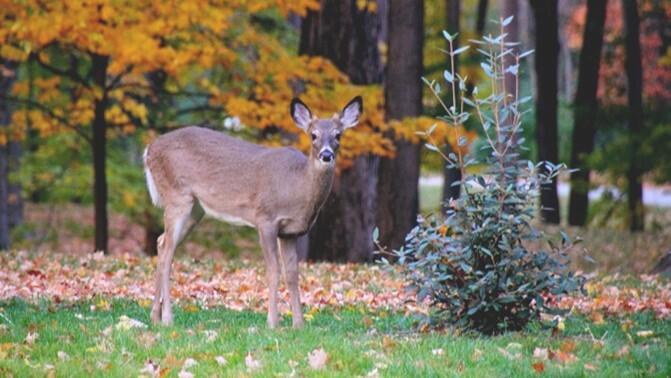First-time homeowners and people who are new to gardening may be excited when they first see deer in their yards. However, after the deer work through their property, those homeowners might find their fruit trees chewed to nubs and their garden destroyed.
Deer can quickly decimate decorative trees, shrubs and fruit trees. These animals also make short work of vegetable gardens. Deer can also carry ticks that spread Lyme disease, a debilitating illness that affects both people and dogs.
Deer are smarter than we often give them credit. The most successful strategy to protect trees, plants, and gardens from deer is to keep them guessing and use a variety of methods to keep them away from your landscape.
Bear in mind that the first rule of deer-proofing is that there are really no plants that are completely deer-proof. When preferred types of food are in short supply, deer will (and do) eat almost any kind of garden plant and shrub. Nevertheless, there are some plants that deer (usually) do not like to eat:
PERENNIALS
Achillea ……………………..….…………..Yarrow
Artemesia ..………………..……..…..Bluestars
Aster ………………………..…………..………Aster
Astilbe ……………………..….……….……Astilbe
Baptisia ………………..…..Blue False Indigo
Bergenia …………………….…………..Bergenia
Brunnera ……………..……….……….Brunerra
Campanula ………………………..…Bellflower
Chelone ……………………….……..Turtlehead
Cimicifuga ……………………….….Cimicifuga
Coreopsis ………………………………Coreopsis
Dianthus …………………….………….Dianthus
Digitalis …………………………………Foxglove
Echinacea …………………………..Coneflower
Eupatorium……………… ..…..Joe Pye Weed
Euphorbia ……………………………..….Spurge
Gaillardia …………………….Blanket Flower
Geranium …………….…..Hardy Geranium
Heuchera …………………..…..…..Coral Bells
Lavandula …………………………….Lavender
Ligularia……………………………..…Ligularia
Monarda …………………………….…Bee Balm
Nepeta ………………………………….…Catmint
Perokskia …………….….………Russian Sage
Rudbeckia ……………….Black-eyed Susan
Salvia …………………….……….……….…….Sage
Scabiosa ……………….………..…..Pincushion
Stachys …………………..……….…Lamb’s Ear
Stokesia ……….………………….Stoke’s Aster
Tradescantia ………………….…..Spiderwort
Veronica ……….………..…….……..Speedwell
GRASSES
Carex ……………………….…….………………….Sedge
Festuca …………………………………………..Festuca
Miscanthus ………………………..…Maiden Grass
Panicum ………………….……….……..Switchgrass
Pennisetum ……………………….Fountain Grass
FERNS
GROUNDCOVERS
Ajuga ………………..……………….……….Bugleweed
Ceratastigma ………………….…………..Plumbago
Clematis ……………………….……….………Clematis
Epimedium ………………………………Epimedium
Galium ………………………………..…………..Galium
Hypericum ……………………….…St. John’s Wort
Lamium …………….………..Spotted Dead Nettle
Pachysandra …………….…………….Pachysandra
Phlox ……………………………………….……..….Phlox
Vinca Minor ……………………………….Periwinkle
TREES & SHRUBS
Aesculus parviflora ……………Bottlebrush Buckeye
Amelanchier arborea ….…………………..Serviceberry
Amelanchier canadensis. ……….……………Shadbush
Amelanchier laevis ………..Allegheny Serviceberry
Betula albo-sinensis ……….………….……….Red Birch
Betula nigra ………..………..…..’Heritage’ Riverbirch
Betula papyrifera ………………….……..…….Paperbirch
Chamaecyparis pisifera ……………..Sawara Cypress
Cryptomeria japonica …………………Japanese Cedar
Picea pungens glauca …………………….…Blue Spruce
Pseudotsuga menziesii ……………………..Douglas Fir
Berbis ……………………………………………….…….Barberry
Buddleia …………………………………….….Butterfly Bush
Buxus ……………………………………………….…….Boxwood
Caryopteris …………………………………………..Bluebeard
Cephalotaxus harringtonia …………. Jap. Plum Yew
Cornus sericea …………………..….Red Twig Dogwood
Hibiscus syriacus …….…………………..Rose of Sharon
Rhamus canadensis ….…………………………Buckthorn
Sambucus canadensis …………American Elderberry






